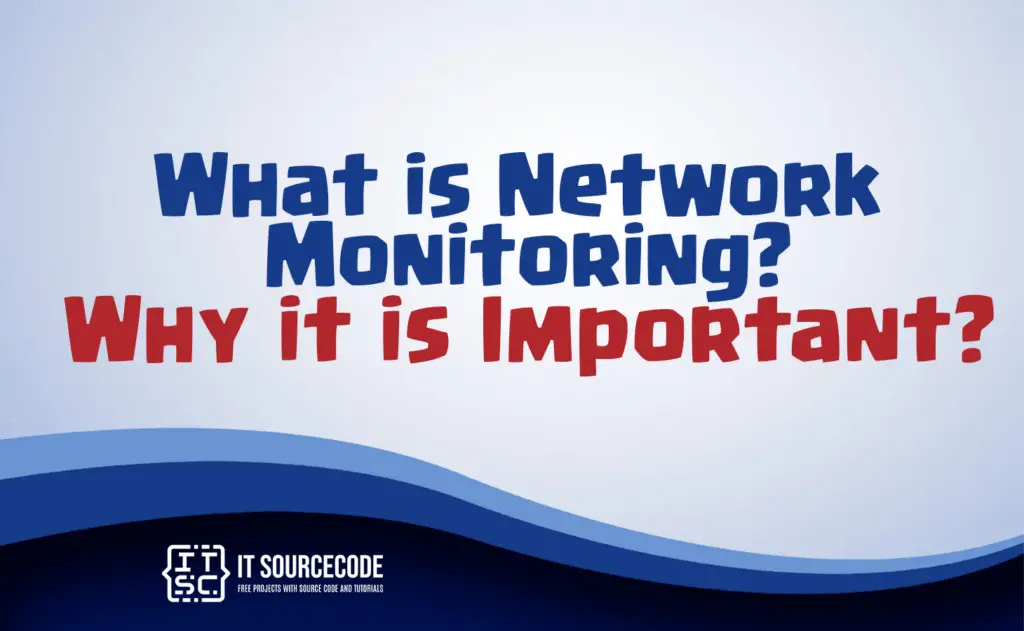WHAT IS NETWORK MONITORING? WHY IT IS IMPORTANT? – This article examines how alterations in our work practices have significantly influenced business cybersecurity, particularly concerning network monitoring.
We will explore the essential elements in today’s dynamic work environment.

What is Networking Monitoring?
Network monitoring has become a widely used term in the IT industry today. It involves a critical process of continuously evaluating and overseeing networking components like routers, switches, firewalls, servers, and VMs to ensure their faultless performance and availability.
A significant emphasis is placed on proactive monitoring, which allows for the early detection of performance issues and bottlenecks, helping prevent any downtime or failures.
The efficient application of proactive server is essential in maintaining an optimized network system.
Why Network Monitoring is Important?
Continuous monitoring of networks and devices brings several advantages, such as the ability to troubleshoot both major failures and slowdowns.
Early troubleshooting guarantees uninterrupted business operations and minimal downtime. Some network monitoring benefits include:
- Rapid Issue Detection: Monitoring the network allows for swift identification of problems, pinpointing their origin, timing, and responsible parties. This proactive approach helps resolve issues before they impact users.
- Optimal Use of IT Resources: Network monitoring systems reduce the need for manual intervention by IT teams during outages, giving them more time to focus on critical projects.
- Historical and Comparative Data: Storing baseline data enables automated comparisons, triggering alerts in case of performance declines. Historical data serves as a reference for assessing network performance and diagnosing past problems.
How to Monitor Your Network?
To start network monitoring, the initial step is to identify the devices requiring monitoring and the essential performance metrics to measure. Here are some fundamental metrics to keep track of:
- Bandwidth usage: It indicates how much data the network sends without overloading it. A network monitoring tool can compare current usage with typical bandwidth utilization.
- Throughput: This metric measures the percentage of data packets sent within a specific time frame.
- Latency: It represents the time taken between requesting data and receiving it. Monitoring latency can be challenging, but a monitoring tool can help in this regard.
- Packet loss: This metric monitors the number of data packets lost during transmissions.
- Retransmission: It measures how frequently data packets are lost and subsequently retransmitted to fulfill data requests.
- Network availability/Uptime: This metric indicates the current availability of the network, and monitoring tools can send alerts in the event of network downtime.
- Connectivity: Ensuring the network connection maintains top performance consistently.
Types of Network Management
Network management encompasses various types, each with its specific scope and objectives. Here are some common categories of network management:
- Fault Management: This type entails actively monitoring and detecting faults or malfunctions in network devices, connections, and services. When an issue is detected, alerts are generated to promptly inform network administrators for troubleshooting and resolution.
- Configuration Management: Configuration management is concerned with effectively maintaining and controlling the configurations of network devices, such as routers, switches, and firewalls. Tasks include tasks like configuration backups, version control, and ensuring compliance with established standards.
- Accounting Management: Also referred to as billing or usage management, this category revolves around monitoring network resource usage by individual users or departments. It is commonly utilized in environments where users are billed based on their network service consumption.
- Performance Management: Performance management focuses on closely monitoring and optimizing the performance of network resources. This includes tracking various performance metrics, analyzing trends, and identifying bottlenecks to ensure the network operates at its best.
- Security Management: Security management involves implementing and maintaining robust security measures to safeguard the network from unauthorized access, data breaches, and cyber threats. Tasks encompass the deployment of firewalls, intrusion detection systems, and access control mechanisms.
Conclusion
In conclusion, network monitoring is essential for detecting and addressing performance issues in real-time. It involves collecting network statistics to assess service quality and includes monitoring various hardware and software devices like routers, firewalls, switches, servers, and WiFi.
The continuous monitoring process allows for proactive problem-solving before any impact on users, ensuring optimal network performance, especially in the context of remote and hybrid work models. Remote network monitoring is crucial to maintaining performance and security for off-site employees accessing sensitive company resources.

